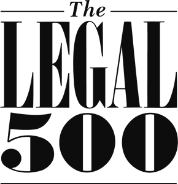The Court of Appeal’s recent decision in Moody’s Investors Service Hong Kong Limited v. Securities and Futures Commission (“SFC”) provides safe harbour from licensing requirements for commentators producing investment analyses in respect of listed companies. However, the decision affirms that those licensed with the SFC must meet minimum standards of conduct in the production of such analyses.
On July 11, 2011, Moody’s Investors Service Hong Kong Limited (“Moody’s”) published a report entitled “Red Flags for Emerging Market Companies: A Focus on China”. The report contained traditional credit ratings in respect of a number of mainland Chinese companies as well as a red flag framework alongside those credit ratings. The red flag framework scrutinized weaknesses in 5 areas and companies with the greatest number of red flags were identified as “negative outliers”.
The Securities and Futures Commission (“SFC”) took issue with the red flags and, as Moody’s was licensed for Type 10 (provision of credit rating services) regulated activity, disciplined Moody’s. Moody’s disputed the SFC’s disciplinary decision and appealed the decision to the Securities and Futures Appeals Tribunal (“SFAT”). As we noted in our research note dated April 1, 2016, the SFAT dismissed Moody’s appeal, adopting a very wide (and in our view, unduly wide) definition of Type 10 regulated activity that put a wide range of market commentary at risk of being subjected to licensing requirements.
Moody’s further appealed to the Court of Appeal and on June 8, 2017, the Court of Appeal again dismissed Moody’s appeal but for reasons different from those of the SFAT. In dismissing the appeal, the Court of Appeal took a more narrow view of the scope of Type 10 regulated activity, thus giving greater scope for market commentators to issue opinions in respect of public companies without triggering a requirement to be licensed for Type 10 regulated activity.
Applicable Law
Credit Rating
Under the Securities and Futures Ordinance (“SFO”), Type 10 regulated activity (providing credit rating services) means:
(a) preparing credit ratings:
(i) or dissemination to the public, whether in Hong Kong or elsewhere; or
(ii) with a reasonable expectation that they will be so disseminated; or
(b) preparing credit ratings:
(i) for distribution by subscription, whether in Hong Kong or elsewhere; or
(ii) with a reasonable expectation that they will be so distributed,
but does not include
(c) preparing, pursuant to a request made by a person, a credit rating which is exclusively prepared for, and provided to, the person and that is neither intended for dissemination to the public or distribution by subscription, whether in Hong Kong or elsewhere, nor reasonably expected to be so disseminated or distributed; or
(d) gathering, collating, disseminating or distributing information concerning the indebtedness or credit history of any person.
The SFO defines the term "credit ratings" as meaning "opinions, expressed using a defined ranking system, primarily regarding the creditworthiness of:
(a) a person other than an individual;
(b) debt securities;
(c) preferred securities; or
(d) an agreement to provide credit".
Disciplinary Jurisdiction
The SFO, s. 194 provides that the SFC may discipline a regulated person if:
(a) the regulated person is, or was at any time, guilty of misconduct
(b) the [SFC] is of the opinion that [the] regulated person is not a fit and proper person to be or to remain the same type of regulated person.
For this purpose, a “regulated person” includes a corporation licensed for a regulated activity. The SFO defines “misconduct” as including:
an act or omission related to the carrying on of any regulated activity for which a person is licensed or registered which, in the opinion of [the SFC], is or is likely to be prejudicial to the interest of the investing public or the public interest.
Background
The SFC disciplinary action alleged that (i) Moody’s lacked the required procedural safeguards to ensure the integrity of the red flags, and (ii) the red flag framework was misleading, confusing and inaccurate in a number of material aspects and therefore Moody’s was guilty of misconduct. As a result, the SFC fined Moody’s HK$ 23 million.
In appealing the SFC’s decision, Moody’s argued that whilst the red flag report was related to its credit rating service, it was not a credit rating and thus, the preparation and provision of the report did not constitute misconduct under the SFO. The SFAT rejected this argument.
Meaning of Credit Rating
In rejecting Moody’s argument, the SFAT held that the term “credit rating” is broadly defined and is not limited to credit ratings of the classic kind which are now globally accepted. It determined that a credit rating need not be limited to a rating of debt securities issued by corporate bodies but could extend to ratings of corporate bodies themselves. In this regard, it emphasized that under the SFO, a “credit rating” is merely an opinion without limitation as to form other than that it be “expressed” using a “defined ranking system”. It further noted that the term “defined ranking system” is not defined, may come in many forms and would include any system that divides its subject matter into ranks or classes that are clearly specified. Finally, it noted that the term “creditworthiness” is not limited in the types of factors that may be taken into account.
On the basis of the foregoing, the SFAT found that the red flags were warning signs of potential credit risk in defined categories of risk. It further found that the red flags measured degree of risk based on the number of flags and that the red flag framework was of general application.
Scope of Disciplinary Jurisdiction
The SFAT further determined that even if the red flag report did not constitute a credit rating, it amplified and supplemented Moody’s credit ratings and thus, became part and parcel of these ratings. On this basis, the SFAT held that the preparation and production of the red flag report was ”related” to the carrying out of Type 10 regulated activity and thus, subject to the oversight of the SFC.
Court of Appeal
In rejecting Moody’s appeal, the Court of Appeal made 2 significant findings. First, it found that the red flag report did not constitute a credit rating. Secondly, it confirmed that the preparation and publication of the Report related to the carrying on of Type 10 activity.
Scope of Disciplinary Jurisdiction
On the latter point, the Court of Appeal stated that the SFAT correctly decided that the failures in the production of the red-flag report fell within “misconduct” under the SFO which defines misconduct as including “an act or omission relating to the carrying on of any regulated activities”. The Court of Appeal stated that the red flag report was meant to be read together with classic ratings usually provided by Moody’s even though the “red flag framework” used in the report was not usually used as part of Moody’s method for determining their usual credit ratings. The Court of Appeal rejected Moody’s narrow interpretation of the statute that an act should only be constituted as “related” to a regulated activity if the act is done to prepare for the regulated activity.
The Court of Appeal’s finding in this respect means that licensed and registered persons may be subject to the oversight of the SFC in respect of activities which do not themselves constitute regulated activities but which supplement those regulated activities. This finding seems sensible. It suggests, for example, that a person licensed for Type 1 (dealing in securities) regulated activity would be subject to SFC oversight in respect of the provision of advice incidental to its dealing activities even if it were not licensed for Type 4 (advising on securities) regulated activity.
Meaning of Credit Rating
The Court of Appeal’s finding that the red flag report was not a credit rating was equally sensible. As noted in our earlier research note dated April 1, 2016, the SFAT decision unnecessarily impairs free speech and results in an undesirable breadth of regulation. The SFAT decision could mean, for example, that a securities research firm licensed for Type 4 (advising on securities) regulated activity could be providing credit ratings and thus, could be subject to a requirement to be licensed for Type 10 regulated activity simply because it produced a system to rank companies based on criteria that would go to the financial soundness of these companies.
In over-turning the SFAT decision in this respect, the Court of Appeal accepted Moody’s argument that the SFAT did not consider the word ”primarily” in the statutory definition of Type 10 regulated activity. As the red-flag report expressed an opinion primarily on corporate governance and accounting risks, it was not a credit rating.












